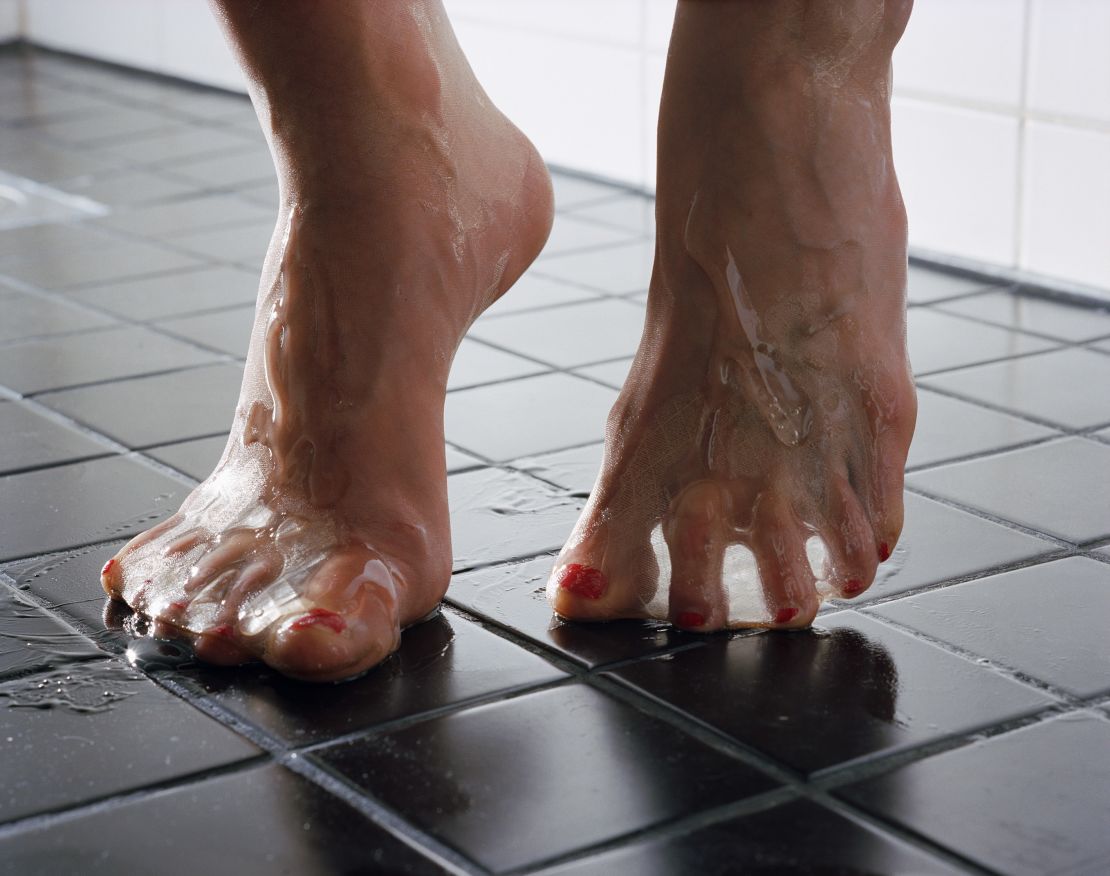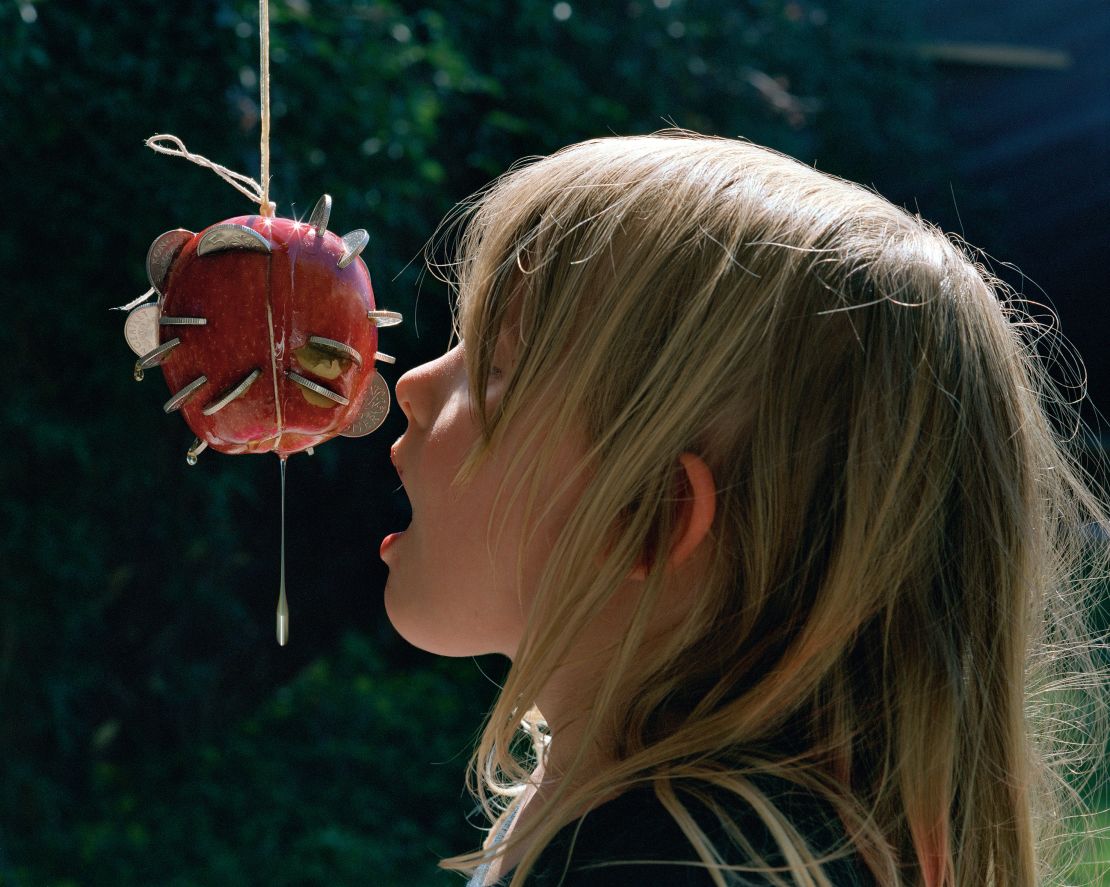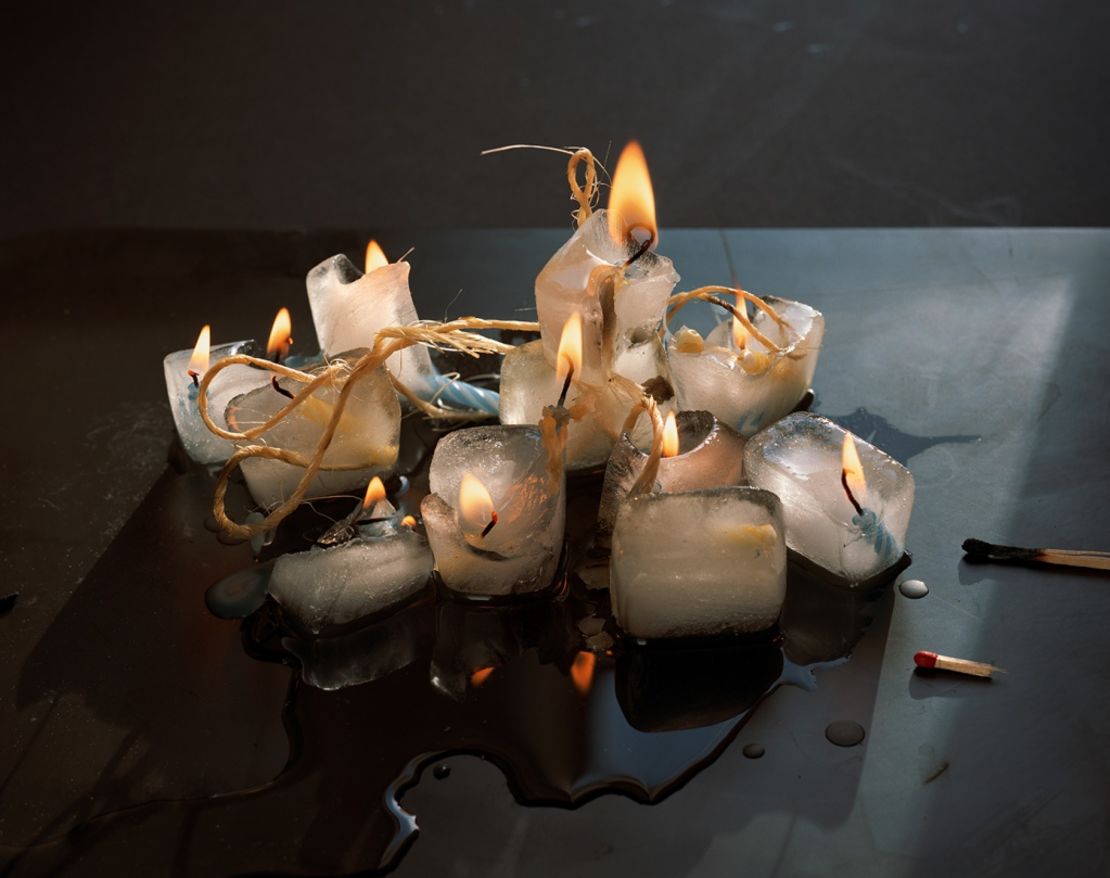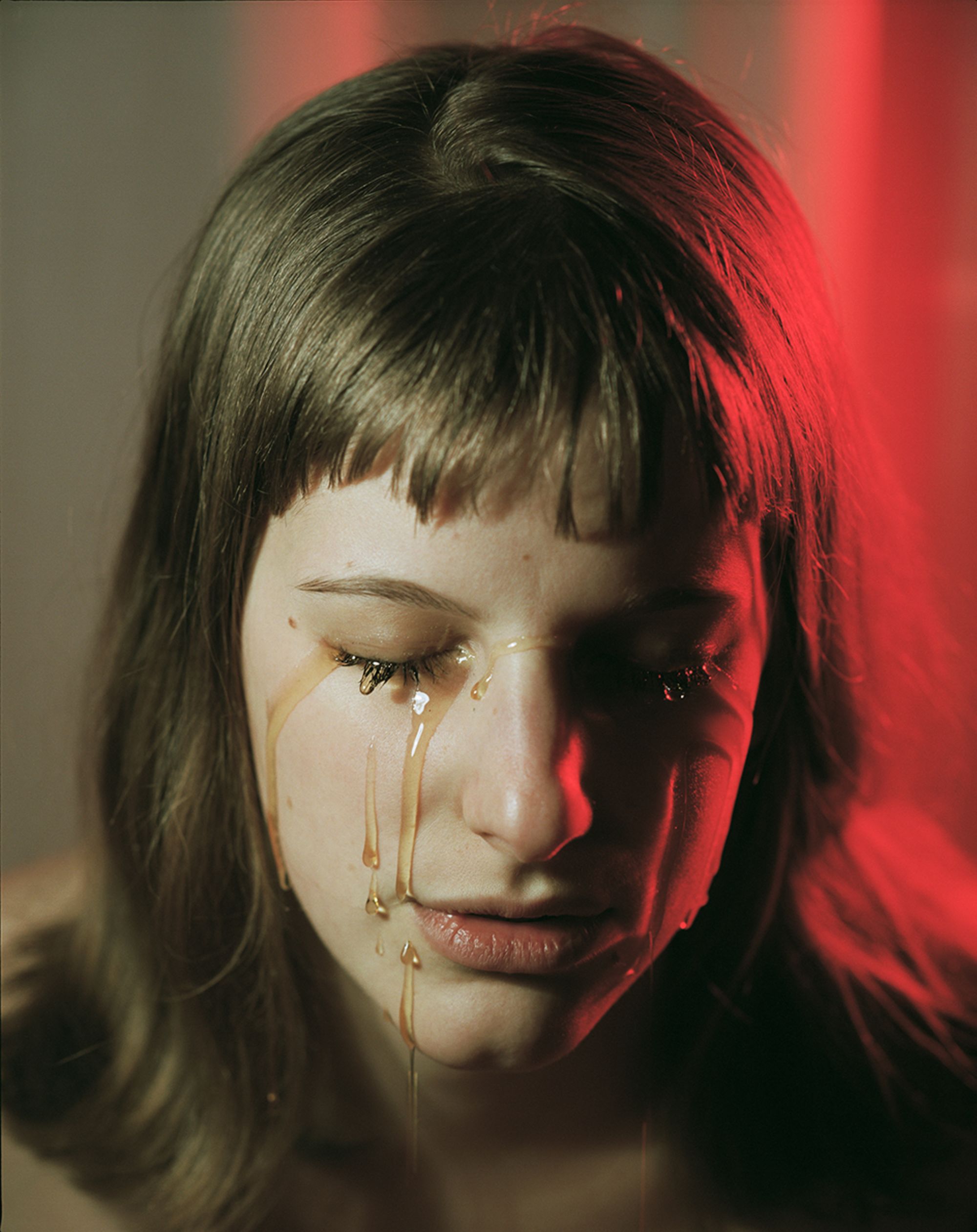The photographs of Torbjørn Rødland never quite resolve, but they are arresting in their uncertainty. The Los Angeles-based Norwegian artist uses analogue photography and (mostly) staged scenes to construct images that don’t provide any straightforward information about the world depicted, yet also evade the neatness of metaphor.
Rødland is deeply attuned to the conventions of human myth – from biblical stories to the body language of pop and advertising. His visual concoctions are challenging and provocative – it’s easy to see how they could leave audiences feeling uncomfortable, or worse.

The gesture of a man’s hand at the cusp of a girl’s lips in “This is My Body” (2013-2015) can, depending on the viewer, conjure overtones that are religious or sinister or both. “Bathroom Toes” (2010-2013) is sharp photograph of wet feet on the bathroom floor, could be the opening shot to a body wash commercial, but, on closer inspection, the wetness is in fact unidentifiable slime. Suddenly the picture takes on the tension of a sci-fi horror.
“Torbjørn Rødland: The Touch That Made You,” on view at London’s Serpentine Sackler Gallery, is Rødland’s first institutional show in the UK, a prolific introduction covering nearly two decades of photographic work, as well as his 2005 video “132BPM.” He spoke to CNN about the process and poetry of his work.

CNN: People often comment on the queasy or perverse nature of your photographs. Where do you think these feelings come from, and is that effect intentional?
Torbjørn Rødland: Yes, the struggle is to make the image active and relatable; clear but complex. Like our new reality, it has to be layered and open to paranoid interpretation.
Where does an image start for you? In your mind, or from observation?
It can be either. But it’s really about the in-between states. A mental image is vague and un-photographic. It needs physical bodies to be seen and expressed. On the other hand, the observed object already awakens an archetype. I’m not interested if it doesn’t.

How do your pictures skirt their photographic duty? I’m thinking about some of the qualities your photographs share with commercial photography, how they play with the visual language of advertising.
Instead of this continuous disappointment over our culture’s meaningless iconography, which typically leads to heartbreak and satire, I take the route of acceptance. Maybe the best way to express authenticity is through a personal and desperate investment in the broken language of popular photography.

Do you consider your photographs impersonal?
I don’t know how helpful these dichotomies are. The images shouldn’t need me to make sense, they shouldn’t depend on an author. At the same time, they are deeply personal – I don’t want them to only arise from or cast a critical eye on a culture – and they don’t work if viewers cannot invest their own experiences, dreams, memories or phobias in them.
I’ve inherited a strong sense of surface from postmodern photography, but the movement is inwards, towards an emerging spirituality. This can be easy to miss and I’m not forcing it on anyone.

How does context factor into the images you make?
In many ways, the project builds on critical appropriation, a form of art where context is everything. But gradually I’ve become conscious of the independent nature of my pictures. Or maybe they’ve grown more independent. I’m now more confident letting them appear outside of a fine art context than I was twenty years ago. But they are still very sensitive to the context of each other.

How has living in LA – the capital of image management – affected your work, or process?
Should I be able to tell how Los Angeles has affected me? I already knew to pretend that everything is alright.
I was never interested in revealing how an image is constructed. That is the old postmodern art. But the awareness of construction is always there. The challenge is to let a picture’s self-awareness make it a more, not less, effective image or vehicle.
The art discourse is naturally elitist, but it doesn’t have to center around itself. My photographs are for people who are stimulated by but ultimately unsatisfied with the photographic images they’re taking in through more predictable channels. Photography is ultimately too important to leave to amateurs and advertisers.
“Torbjørn Rødland: The Touch That Made You” is on at the Serpentine Sackler Gallery until Nov. 19, 2017.
Top image: “This is My Body” (2013-15) by Torbjørn Rødland
